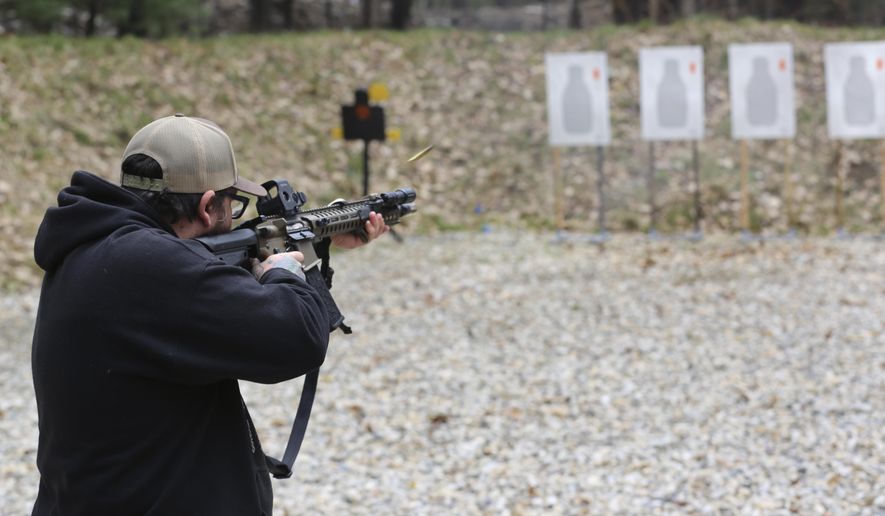OPINION:
Editor’s note: This is one in a series examining the Constitution and Federalist Papers in today’s America.
The right to keep and bear arms has a prestigious and gloried history. Titans of constitutional law such as St. George Tucker and Joseph Story referred to this protection as the “true palladium of liberty” — the bulwark that preserves all other inalienable rights.
They, like the Founders, understood that the Second Amendment’s purpose was to ensure that the people were armed and always capable of defending their natural rights, whether against an invading army, a tyrannical government or criminal actors.
Two centuries later, far too many inheritors of this precious safeguard have relegated it to second-class status, mischaracterizing its purpose as protecting hunting rights instead of human rights and deriding it as a dangerous relic with no place in modern society.
The first part of this critique is undoubtedly true. The world has changed dramatically over the last two centuries. Unfortunately, human nature has not.
The same three primary threats to our rights — tyrannical governments, foreign invasions and criminal actors — exist today just as they existed in 1791, when the Second Amendment was ratified. Arguably, these threats are even more pronounced today, given the ways in which modern technology has enhanced the capacity of those who are not always animated by charity to wreak havoc on the rights of others.
History, especially recent history, is replete with examples of murderous regimes rising to power to the detriment of individuals and their liberties. Despite the much-touted “triumph of liberalism” and democracy in the West, the 20th century was the bloodiest century. It did not rid the world of authoritarianism or government-sponsored human rights violations.
Quite the contrary. According to one recent analysis, in the 20th century, authoritarians oversaw the murder of more than 200 million noncombatants, many of them their own citizens, many of them effectively disarmed through the imposition of restrictive gun control regulations.
Meanwhile, “foreign invasion” doesn’t rank nearly as high today on many American threat radars as it did during the founding era, or even during the Cold War era.
Nonetheless, we know that our current relative peace of mind regarding our national security is a historical anomaly. We also know that serious global conflict can quickly shatter assumptions about the permanence of international tranquility. Ask the Ukrainians.
It also turns out that we still haven’t solved the problem of crime or ushered ourselves into a utopia. Over the decades, crime rates have spiked, and plummeted, and spiked again, often for reasons we still don’t fully understand. The United States is still reeling from the single largest one-year increase in homicides in the nation’s history, which took place way back in 2020.
For all of the advances of modern sociology and professional policing, the reality is that the government cannot always be on hand to protect its citizens from crime at all times. Nor does anyone want to live in a police state capable of immediately intervening in every human interaction.
While some gun control advocates such as New York Gov. Kathy Hochul like to claim that “the myth of the good guy with a gun is over,” the data tells a very different story about the continued importance of the right to keep and bear arms in the lives of ordinary Americans.
A 2013 report by the Centers for Disease Control and Prevention concluded that almost every study on the issue has found that Americans use their guns defensively between 500,000 and 3 million times a year. Just last year, the most comprehensive survey of gun owners ever conducted reaffirmed the 2013 report, finding an average of 1.6 million annual defensive gun uses annually.
Unfortunately, instead of looking at the dangerous impact that their own liberal policies have on crime, many liberals today join forces with advocates of gun control to insist that this fundamental right of the people is the problem instead of part of the solution. By doing so, they weaken the practical ability of any person or community to forcibly resist assaults on their life, liberty and property.
More than 200 years after its ratification, the Second Amendment remains liberty’s most essential safeguard, and it will remain as such until when, freed from the threats of tyranny, war and crime, all of humanity may “beat their swords into plowshares, and their spears into pruning hooks.”
Editor’s note: This is one in a series examining the Constitution and Federalist Papers in today’s America.
• Amy Swearer at a legal fellow in The Heritage Foundation’s Meese Center for Legal and Judicial Studies.





Please read our comment policy before commenting.